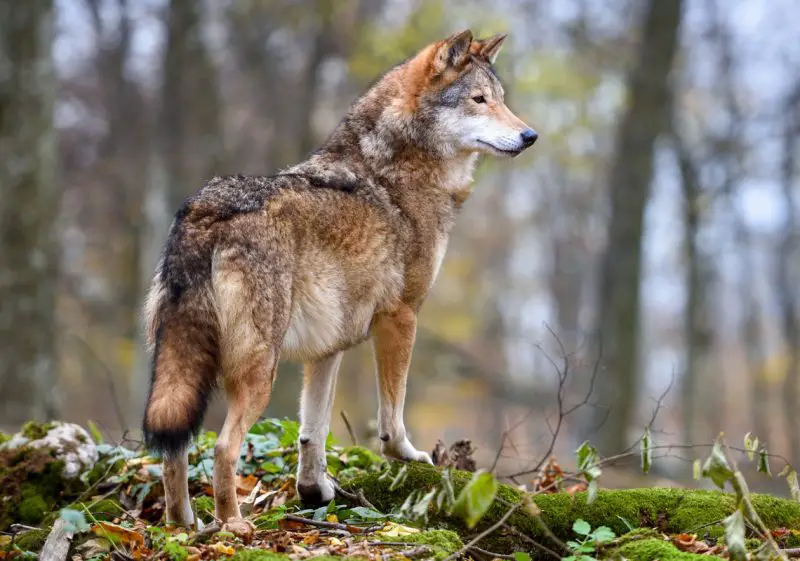Across North America, wolves are revered as powerful and enigmatic apex predators. These animals have captivated human imagination for centuries, embodying wilderness, resilience, and ecological balance. Among the various regions where wolves roam, Minnesota holds a unique place. The wolves in Minnesota exhibit distinctive characteristics, behaviors, and ecological roles compared to their counterparts in other states.
This article explores in depth how wolves in Minnesota differ from those in other states, shedding light on their biology, habitat, conservation status, and interactions with humans.
The Historical Context of Wolves in Minnesota and Other States

The history of wolves in Minnesota is closely tied to the broader story of wolf populations across the United States. Once ranging widely throughout North America, gray wolves faced severe population declines during the 19th and 20th centuries due to hunting, trapping, and habitat loss. Minnesota, however, became a refuge where wolves managed to survive in relatively greater numbers compared to many other states.
While wolves were extirpated from most of the contiguous United States by the mid-1900s, Minnesota’s expansive forests, abundant prey, and remote wilderness areas allowed a resilient population to persist. This contrasts with states in the West and the Great Lakes region, where wolves were completely wiped out and later reintroduced or recolonized naturally. Thus, Minnesota’s wolf population carries a legacy of uninterrupted continuity, making them genetically and behaviorally distinct in some ways.
Geographic and Habitat Differences
The physical environment that Minnesota wolves inhabit is a key factor distinguishing them from wolves in other states. Minnesota is located in the Upper Midwest and features a landscape dominated by boreal forests, mixed hardwoods, lakes, and wetlands. This terrain offers a diverse and productive habitat supporting a robust prey base, such as white-tailed deer, moose, beavers, and smaller mammals.
In contrast, wolves in states like Idaho, Montana, and Wyoming mostly inhabit mountainous and arid ecosystems. These Western wolves often navigate rugged terrain, open tundra, or semi-desert environments. Their hunting strategies and social dynamics have adapted accordingly.
Moreover, wolves in states like Michigan and Wisconsin share more similarities with Minnesota wolves, as they inhabit the Great Lakes region’s forests and wetlands. However, Minnesota’s forests are larger and less fragmented, allowing wolves to establish larger territories and pack sizes.
Physical Characteristics and Genetic Distinctions
Minnesota wolves, scientifically known as Canis lupus, often display physical traits adapted to the northern forest environment. They tend to be slightly larger and bulkier compared to wolves in the southern United States, a phenomenon consistent with Bergmann’s rule, which states that animals in colder climates often evolve larger bodies to conserve heat.
The fur of Minnesota wolves is thick and dense, well-suited for harsh winters, and typically a mix of gray, black, and brown tones with white patches on the chest and face. This coloration provides camouflage in snowy and forested settings.
Genetic studies have revealed that Minnesota wolves possess a distinct genetic lineage compared to wolves in Western states. Their gene pool is more closely related to the historical populations of the Great Lakes region. This genetic uniqueness is significant for conservation efforts, as maintaining genetic diversity ensures population health and resilience.
Social Structure and Pack Dynamics in Minnesota Wolves
Wolves are inherently social animals, living in complex packs that cooperate for hunting and raising offspring. Minnesota wolves tend to have well-established pack structures, often consisting of an alpha pair and their offspring from several years. These packs are usually stable and cohesive, partly due to the abundant resources and large continuous habitat.
One of the intriguing differences between Minnesota wolves and those in other states lies in their pack sizes and territorial behavior. Minnesota wolves generally have larger territories that can range from 50 to 200 square miles, reflecting the lower human population density and availability of prey. This contrasts with wolves in more fragmented or developed areas, where territories may be smaller due to competition and limited habitat.
Additionally, Minnesota wolves exhibit seasonal variation in pack cohesion, especially during harsh winters when they rely heavily on group hunting to bring down large prey like moose. The cooperative nature of hunting is more pronounced here, compared to some Western wolf populations that may hunt smaller prey or scavenge more frequently.
Diet and Hunting Behavior: A Comparison
Diet plays a crucial role in shaping wolf behavior and ecology. Minnesota wolves have access to a diverse array of prey species, which influences their hunting strategies. The dominant prey in Minnesota includes white-tailed deer and moose, but wolves also hunt smaller mammals such as snowshoe hares, beavers, and occasionally birds.
The presence of large ungulates like moose is particularly significant, as hunting such large prey requires cooperative pack hunting and advanced strategies. Minnesota wolves are known for their persistence and endurance during hunts, often working together to isolate and bring down even the largest animals.
In contrast, wolves in southwestern states may prey more heavily on elk, mule deer, or even livestock, depending on availability. Western wolves sometimes adapt to more open habitats where stealth hunting is less feasible, influencing their behavior and success rates.
Minnesota’s wolves also have less frequent contact with livestock compared to wolves in some Western states, reducing human-wildlife conflict related to predation on domestic animals.
Conservation Status and Management Practices
Minnesota has long been recognized as a stronghold for wolf conservation in the United States. Wolves were protected under the Endangered Species Act (ESA) in the 1970s, and Minnesota’s population remained relatively stable and robust throughout the recovery period. The state’s wolf population currently numbers in the thousands, the largest in the contiguous US.
In comparison, wolves in states such as Idaho, Montana, and Wyoming experienced complete extirpation and have only been reintroduced or recolonized in recent decades, with smaller populations and ongoing management challenges.
Minnesota’s conservation approach emphasizes coexistence, habitat protection, and scientific research. The state actively monitors wolf populations through radio collaring, tracking, and public reporting. Management policies balance wolf protection with concerns from hunters, farmers, and rural communities.
Unlike some Western states where regulated hunting of wolves has been reintroduced following delisting from ESA protections, Minnesota has maintained stricter controls on wolf hunting. This approach aims to preserve the genetic diversity and ecological function of wolves while minimizing conflict.
Human-Wolf Interactions and Cultural Significance
The relationship between humans and wolves varies widely across states, reflecting cultural, economic, and ecological factors. In Minnesota, wolves are both revered and viewed with cautious respect. Indigenous peoples in the region have long-held cultural and spiritual connections to wolves, often regarding them as symbols of strength, loyalty, and wilderness.
Minnesota’s general public has shown increasing interest in wolf conservation, education, and ecotourism, with wolf watching becoming a popular activity in certain areas. This positive attitude contrasts with some Western states where wolves have faced significant opposition from livestock producers and hunters.
Nevertheless, challenges remain in Minnesota, including occasional livestock depredation and concerns about wolf impact on deer populations. State agencies and conservation groups work to mitigate conflicts through non-lethal deterrents, compensation programs, and community outreach.
Ecological Role and Impact on Minnesota’s Ecosystems
Wolves are apex predators, meaning they sit at the top of the food chain and play a crucial role in maintaining ecosystem balance. In Minnesota, wolves help regulate populations of herbivores such as deer and moose, which in turn influences vegetation and forest regeneration.
This top-down control promotes biodiversity by preventing overgrazing and supporting habitats for other wildlife species. The presence of wolves can also affect the behavior of prey animals, leading to healthier ecosystems overall.
Compared to some other states, Minnesota’s wolves have arguably a more integrated and stable ecological role because their populations have been continuous for decades. In states where wolves have only recently returned, ecological dynamics are still adjusting.
Differences in Wolf Subspecies and Hybridization
While most wolves in Minnesota are gray wolves, there is ongoing scientific discussion about subspecies variation and hybridization with coyotes and domestic dogs in some regions of the US.
Minnesota wolves tend to maintain genetic purity as gray wolves with limited hybridization, due to the extensive forest habitat and established populations. In contrast, states on the southern edge of the gray wolf range sometimes report more frequent wolf-coyote hybrids (known as “coywolves”), which show different behavior and ecological adaptations.
This genetic distinction influences conservation priorities and management decisions. Maintaining pure gray wolf populations is important to preserve species identity and ecological function.
Challenges and Future Prospects for Wolves in Minnesota
Despite the relative success of wolf conservation in Minnesota, the species faces ongoing challenges. Habitat fragmentation from development, roadways, and logging can isolate wolf packs and reduce genetic exchange. Climate change may also impact prey availability and habitat suitability over time.
Human-wolf conflicts, although less frequent than in some states, still occur and require continued attention. Balancing hunting interests, livestock protection, and wolf conservation will be a delicate task for policymakers.
Looking forward, Minnesota’s wolves are expected to remain a vital component of the state’s natural heritage. Continued research, monitoring, and community engagement will be essential to ensure wolves thrive alongside human populations.
FAQs about Wolves in Minnesota
What makes wolves in Minnesota unique compared to wolves in other states?
Wolves in Minnesota have a long-standing continuous population, larger territories, thicker fur, and distinct genetics adapted to northern forests unlike reintroduced wolves elsewhere.
How do Minnesota wolves’ habitats differ from those in other states?
Minnesota wolves live mainly in boreal and mixed forests with abundant lakes and wetlands, contrasting with wolves in mountainous or arid regions in the West.
Are Minnesota wolves genetically different from other wolf populations?
Yes, genetic studies show Minnesota wolves belong to a unique lineage related to Great Lakes populations with limited hybridization compared to wolves in southern states.
What is the conservation status of wolves in Minnesota?
Minnesota’s wolf population is stable and protected, with strict management policies focusing on coexistence, unlike some states where wolf hunting is allowed.
How do Minnesota wolves impact the local ecosystem?
As apex predators, Minnesota wolves help regulate prey populations, promote forest regeneration, and maintain ecological balance across their habitats.
Conclusion
The wolves of Minnesota differ from those in other states in numerous important ways. Their long-standing presence, adaptation to northern forest ecosystems, distinctive genetics, and ecological roles set them apart from wolves in the Western US and other regions. Minnesota offers one of the best examples of how wolves can coexist with human societies while fulfilling their essential function as apex predators.
Understanding these differences not only enriches our knowledge of wolf biology but also informs conservation strategies tailored to specific regional contexts. Wolves in Minnesota symbolize resilience and wildness, reminding us of the complex relationships between nature and humanity across the American landscape.






